Rudolf Rahn
The Otto Rahn's brother name was also Rudolf.
В поисках утраченного Грааля
Берлин между мировыми войнами был городом, известным по всей Европе своей богемной субкультурой молодых интеллектуалов. Среди лиц, которые горячо обсуждали много модернистских "измов", которые ломали старые идеологические определения, что склеивали 19-ое столетие, немногие были более колоритными, чем этот темноволосый, зеленоглазый молодой человек по имени Отто Вильгельм Ран. Его худая фигура, одетая в характерный черный плащ и фетровую шляпу, бросает длинную тень из тех сумеречных лет, ‘великий силуэт’, вокруг которого вращались самые невероятные мифы. Он, как говорили, был Масоном, Розенкрейцером, Люциферианцем, посланцем Общества Туле, посвященным Катаром и даже руководителем некоего неизвестного международного тайного общества.
Faked SS member ausweis of Otto Rahn
SS member ausweis faked by Christian Bernadac to prove that Otto and Rudolph Rahn were the same persons.
From Richard Stanley Terra Umbra<
Otto Rahn: las conexiones entre catarismo y nazismo
UNA DE LAS FIGURAS que más fascinación ha ejercido en relación al mundo “neocátaro” es Otto Rahn, que buscó el Santo Grial en la fortaleza de Montségur. Miembro de las SS que acabó expulsado de sus filas, dejó una obra escrita breve pero influyente en el entorno hitleriano al amalgamar nazismo y catarismo. Sabemos muy poco de él, pues su trayectoria está rodeada de toda suerte de especulaciones. Y es que su personalidad fue harto chocante: francófilo y al parecer homosexual, se desenvolvió en un universo nazi pangermánico y exaltador de la virilidad.
Así las cosas, los interrogantes sobre Rahn son numerosos, abarcan todos los órdenes de su vida y tienen difícil respuesta con las fuentes disponibles: ¿Fue un estudioso del catarismo o lo empleó como pretexto para labores de espionaje? ¿Actuó como un nazi convencido o su condición de homosexual y la falta de medios le llevaron a las filas de las SS? ¿Murió en 1939 o se orquestó una farsa para “blanquear” sus supuestos ancestros judíos? Al margen de sus móviles, sabemos con certeza que nazificó el catarismo y mereció la atención y la complacencia del máximo dirigente de las SS, Heinrich Himmler.
Otto Rahn: author, poet, Grail seeker, SS officer
In February 2007, Montserrat Rico Góngora published “The Desecrated Abbey”, in which he claimed that Heinrich Himmler, Hitler’s second-in-command and head of the Nazi SS, had made a secret wartime mission to an abbey in Spain, in search of the Holy Grail. Góngora even interviewed Andreu Ripol Noble, a former monk and the only person that spoke German, who was ordered by his superiors to guide Himmler during the visit in 1940. Ripol related that Himmler came to Montserrat inspired by Richard Wagner’s opera “Parsifal”, which mentions that the Holy Grail could be kept in “the marvellous castle of Montsalvat in the Pyrenees” – the mountain range that marks the border between France and Spain.
Le Mystère Otto Rahn - Du catharisme au nazisme (Le Graal et Montségur), août 1978, Christian Bernadac
Christian Bernadac, avançant de "coïncidences en coïncidences" propose une solution au "Mystère Otto Rahn". Otto Rahn serait devenu Rudolf Rahn, collaborateur d'Abetz à Paris avant de terminer la guerre Ambassadeur du Reich à Rome, alors que le chef militaire en Italie était ce même Karl Wolff qu'il aurait connu à Ussat-les-Bains avant de le retrouver à l'état-major privé d'Himmler. Oui! Aucun romancier n'aurait pu imaginer un tel destin.
Le "Mystère Otto Rahn" est un livre que ne ressemble à aucun autre; si l'enquête occupe le corps principal de l'ouvrage. Christian Bernadac profite "des jours et des lieux" pour "débarbouiller" le catharisme des mensonges, des invraisemblances, des détournements, des mystifications dont l'ont affublés charlatans, "exploiteurs de lumières" et membres de sociétés ésotériques ou secrètes. Une oeuvre salutaire qu'attendaient les véritables amoureux de Montségur et des "Parfaits".
Hans-Jürgen Lange: Otto Rahn oder was ist historische Wahrheit?
Der Volksmund sagt: "Lügen haben kurze Beine", schön wäre es, aber in Wirklichkeit wird Geschichte auch von unsterblichen "Zeitungsenten" beherrscht.
Was das mit Otto Rahn zu tun hat? Wie ich meine, eine ganze Menge.
Denn was bei Zeitungen nicht ins Gewicht fällt, wie heißt es doch so schön - "nichts ist älter als die Zeitung von gestern" - hat in Büchern ein langes Leben. Drei Beispiele aus der neueren Literatur können diese verschiedenen Formen von Scheintatsachen belegen.
Версия о работе Рана после своей "смерти" в 1939 году послом в Италии несостоятельна
Одна из версий о жизни Отто Рана после его смерти в 1939 заключается в том, что некий Rahn был послом Германии в Италии в последние годы Третьего Рейха. Действительно, такой человек был, но это, похоже, не наш Отто.
Фото из архивов того времени, найденнoе в депозитарии Assotiated Press<.
На нем слева направо: Отто Ран, посол Германии в Италии, фельдмаршал Эрвин Роммель, и Бенито Муссолини. Снимок сделан 22 января 1944 года в штаб-квартире итальянского правительства.
Хоть лицо Рана почти не видно, можно с уверенностью сказать, что это человек старше 50 лет, выше среднего роста, крупного телосложения, что совсем не соответсвует субтильной фигуре Отто Вильгельма Рана, которому на тот момент должно было бы быть 40 лет.
RELIGION: The Cathars and Otto Rahn
Ed Jajko says:_I would be most interested if Christopher Jones could cite his authorities for the Cathar Christology he presents us. What little I have read suggests that the Cathars had different, not entirely coherent views on Jesus Christ, but that they were not quite in consonance with what Mr. Jones has stated. Reference to a couple of scholarly sources would be much appreciated.
RH: Yes, a few precise sources.
Ed Jajko asked Christopher Jones to give sources for his statements about the Cathars. Christopher replies:
The sources for my comments on the Cathari are all from Cruzada contra el Grial [original German, Kreuzzug gegen dem Gral] by Otto Rahn. This particular translation was done by Fernando Acha and published by Hiperión in Madrid. To the best of my knowledge and a fact that was reconfirmed to me by the current copyright holder in Germany, Rahn's book was never translated into English although Spanish, French and Italian versions exist. The book was first published in 1933.
The version of Rahn's service after death in 1939 as a ambassador to Italy is untenable
One of the versions of the life of Otto Rahn after his death in 1939 is that some Rahn was Germany's ambassador to Italy in the Third Reich recent years. Indeed, this man existed, but it does not seem to our Otto.
There is a photo from the archives found in the depository of the Assotiated Press<.
От the photo: The German Ambassador in Italy, Otto Rahn, left, talks with Germany's Field Marshal Erwin Rommel and Benito Mussolini during a reception in governmental quarters in Italy on Jan. 22, 1944.
Otto Rahn (Dutch)
Otto Rahn werd geboren in Michelstadt (Odenwald) op 18 februari 1904. Na zijn middelbare studies (en de eerste wereldoorlog) trekt hij naar de universiteit waar hij aanvankelijk rechten studeert. Maar al spoedig gaat zijn belangstelling uit naar de literatuur en laat hij zich inschrijven aan de faculteit der letteren in Heidelberg. Zijn droom is literair recensent te worden voor een krant of tijdschrift.
Als muziekliefhebber dweept hij met Wagner. Diens "Parsifal" brengt hem in contact met de graallegenden en hun Duitse auteur Wolfram von Eschenbach. Die studie zal hem nooit meer loslaten.


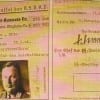
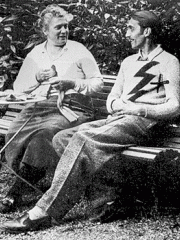
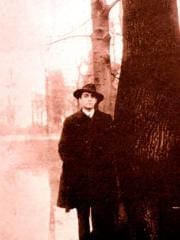
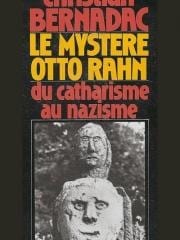

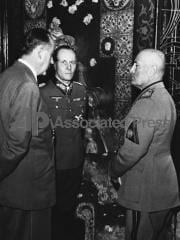
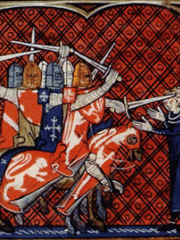
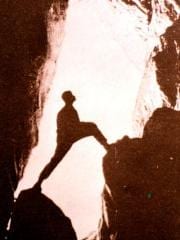
Comentarios recientes
hace 13 años 44 semanas
hace 13 años 45 semanas
hace 13 años 45 semanas
hace 13 años 45 semanas
hace 13 años 48 semanas
hace 14 años 2 semanas